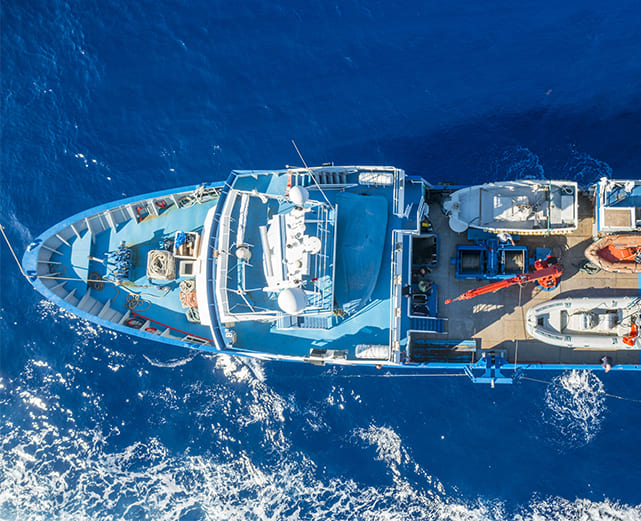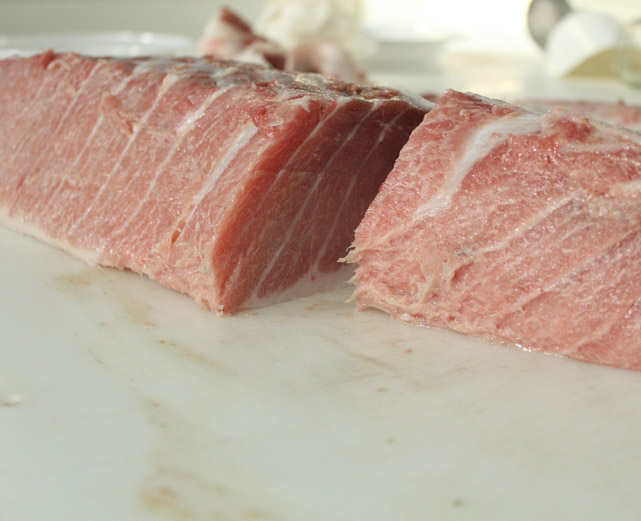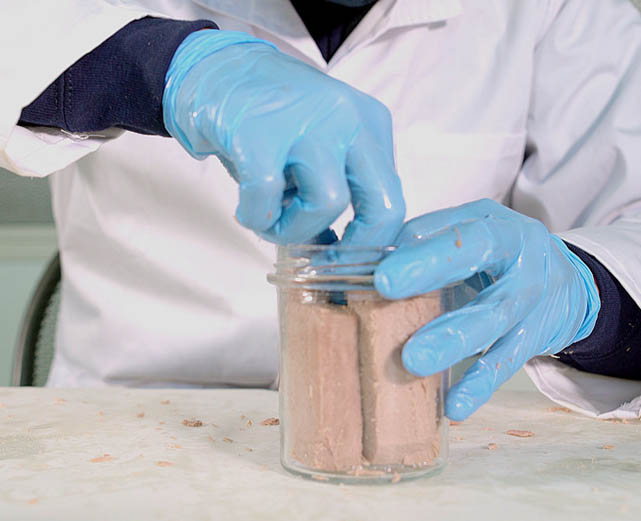Bluefin
Tuna

The Testa family has been fishing for more than 200 years: a span of time that goes from sail fishing to the most modern technologies, from the need to follow the wind and its changes to the obligation to send in real time to MiPAAF – Ministero Delle Risorse Agricole Alimentari E Forestali – the videos of the tuna catch to wait for the confirmation of the count in respect of the assigned quota.
Red tuna fishing is in fact a precision job that involves three different players: the crew, the ICAAT (International Commission for the Conservation of Atlantic Tunas, the world organisation that protects this species) observer on board, and the MiPAAF. Without the agreement and cooperation of the parties, it is not possible to proceed.
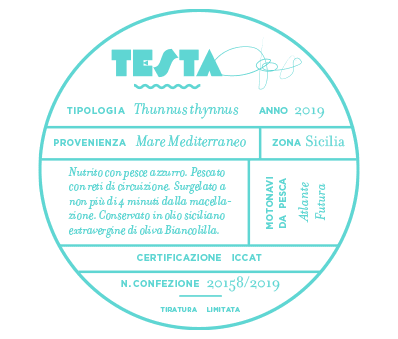
Tuna passion
Red tuna, a protected marine species.
The red tuna is a protected marine species and, to this end, ICCAT quotas have been created to limit its capture in terms of number and weight: in order not to hinder its reproduction, only specimens weighing over thirty kilos may be fished. This attention is helping to repopulate the Mediterranean.
The fishing season
From the ocean, the tuna reaches the Mediterranean in April, crossing the Strait of Gibraltar and skirting Africa in search of warmer waters; depending on the currents, part of it reaches the coasts of Calabria – from Cape Palinuro to Cape Vaticano – where there is a strip of sea that maintains higher temperatures.
The fishing season is concentrated in an interval of thirty days, between May and June: this is the period when tuna that have reached maturity – between 2 and 4 years of age, with an average weight of 15 kg and a length of around one metre – mate and lay their eggs. At this stage, as they move less quickly and are stationary in search of a mate, they are fatter.
Short chain, high quality
The tuna is caught with encircling nets and from there transferred to the growing tanks – about 50 metres in diameter and 30 metres deep – located in the Sicilian Channel. Here it is fed exclusively with oily fish: its diet, based on herring and sardines, is constantly monitored in order to guarantee a high quality product whose meat has a high content of unsaturated fats, mainly omega-3.
The time it takes for a red tuna to pass from the tank where it is raised to slaughter and freezing at minus seventy degrees is measured in minutes: there are only four of them and they are essential to guarantee the freshness of a superior product, totally free of bacteria. Four minutes between the sea and minus seventy degrees, then – after twenty-four hours – the temperature is brought down to minus sixty degrees, rising to minus forty at the time of delivery, when the tuna is ready to be processed into Testa tuna.
Tuna identity card
A very short supply chain and circular work for the Testa family, who are therefore also responsible for the conservation and processing of bluefin tuna and bluefish in their Portopalo di Capo Passero factory. This guarantees a high standard of quality: each can of tinned fish bears the BCD number (Bluefin tuna Catch Document), an “identity card” of the tuna that tells its story and guarantees traceability at all stages, from sea to table.
Albacore fishing
Albacore is common in the Mediterranean Sea, especially around the Aeolian Islands. It reaches one metre in length and weighs around 25 kg. It differs from the bluefin tuna in its pectoral fins, which extend to the anal fin, and in its “barrel” shape, which is less slender than that of the bluefin tuna, but with which it shares its colour: dark blue on the back and white on the sides and belly. Tuccio Testa tells us about the tasting: “After forty-five days of maturation in its extra virgin oil, the taste of our albacore tuna is incredible. “I tasted the albacore fillets and found them so delicate and full of flavour that they had a crisp effect. One pulls the other. You can’t compare them with bluefin tuna, because there are so many differences between the two that it doesn’t make sense. Lucky for us that we have both.
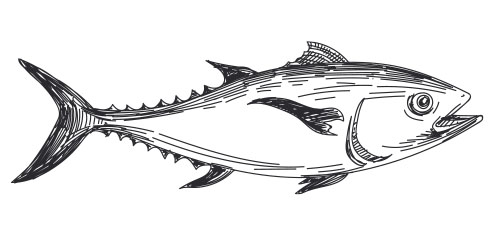
kg is the minimum size allowed
of the vessels in Italy allowed to fish for tuna, two belong to the Testa family
km/h is the speed a tuna can reach (during crossings)
